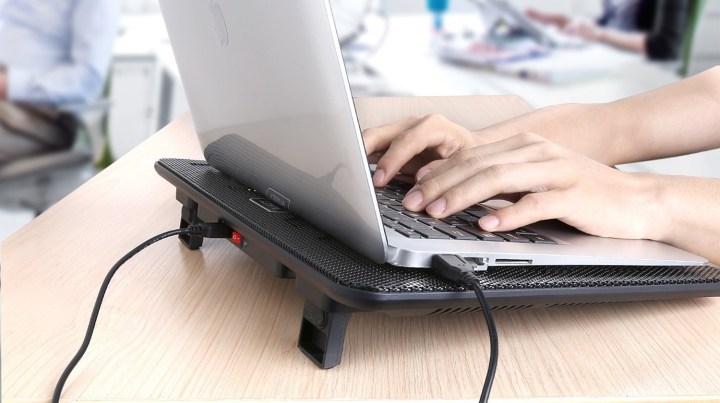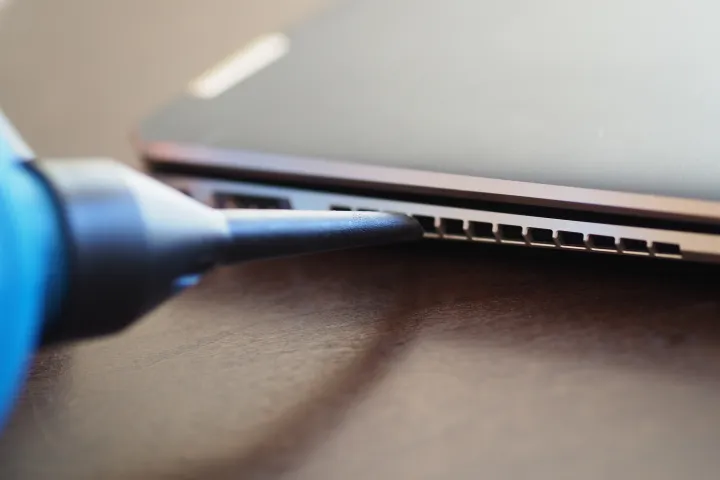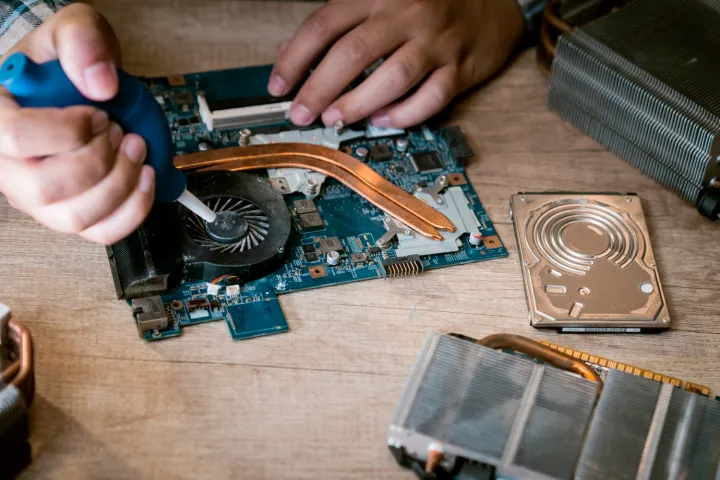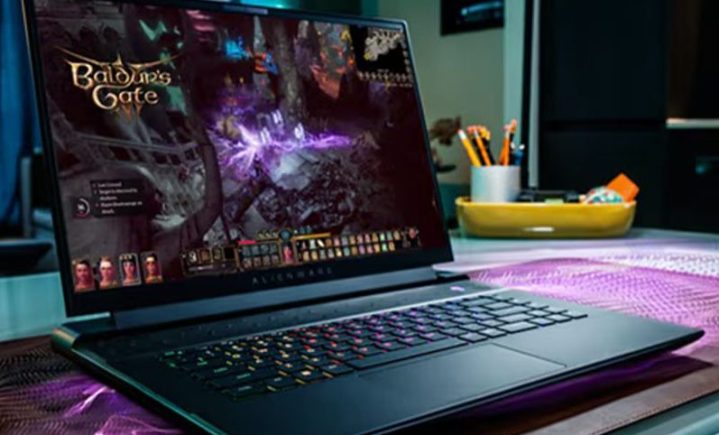When you buy one of the top laptops, you can usually rest assured that they’ll work fine for the next few years.
Except sometimes, they don’t.
I’ve had my fair share of laptops, and one of the main things that has always stressed me out was the fact that they were running a little hot. Overheating can cause lots of problems, from wear and tear to total hardware failures. If this sounds familiar, you might want to check out the things I’ve done to turn my “portable space heater” into a proper laptop.
When ‘hot’ gets ‘too hot’

The first step toward fixing an overheating problem is to find out whether your laptop actually has an overheating problem.
It sounds strange, but I learned that one the hard way years ago. I haven’t had the best luck with laptops. In retrospect, I know that it’s because I bought some of them without doing the necessary research and on the cheap. As a result, out of the close to 10 laptops I’ve owned so far, most ended up underperforming in one way or another, but the heat wasn’t always the root cause of the problem.
When I first dealt with poor laptop performance and I felt it running hot, some surface-level googling led me to buy the cheapest cooling pad I could find. Some sort of placebo effect convinced teenage me that it helped for a couple of days, but it didn’t. It didn’t take long before the laptop refused to boot and I found out that the problem lay with the CPU and not the heat. I’m not saying that’s the case with your laptop, but it’s definitely worth checking first.
Two things usually lead laptop users to start troubleshooting their PC — either poor performance and crashes or just the fact that the laptop is hot to the touch and the fans are running at full speed. It’s important to remember that just because the laptop is underperforming or the chassis feels warm doesn’t mean that you have to run to a repair shop. Those things pack a lot of punch in a small form, so a bit of warmth can be expected.
Now, let’s get digging. Start by checking your CPU temperatures in various situations. My favorite program for this is HWMonitor, which will also report on some of the other key sensors in your PC, such as voltages and fan speeds — unless you have a thin and light fanless laptop, that is.

Depending on the laptop, the temperatures when idle and when running something taxing, like a game, will differ. In general, even high-end gaming laptops shouldn’t be idling at above 55 degrees Celsius, and if you’re reaching 80 to 90 degrees Celsius when the laptop is in use, something is most likely wrong. At that point, doing something about those temps becomes necessary.
Letting your laptop run hot once or twice is not a problem, but it will usually affect the notebook in ways that range from annoying to disastrous if you let it happen repeatedly. Excessive heat causes thermal throttling, which means your laptop will run games in slideshow mode instead of the smooth performance you might have grown used to, or it will take forever to even open up the browser. In worst-case scenarios, it might shut down and refuse to power back on due to hardware damage.
Most laptops I’ve ever owned had some sort of an issue with heat, so I’ve been in your shoes. Fortunately, I’ve learned how to deal with it without paying for professional repairs. Here are some tricks to try before you take your laptop to a repair store.
Breaking the habit

If you’ve been taking the “lap” in “laptop” quite literally, it might be time to break that habit if the computer is prone to overheating. Laptops, for all their portability and convenience, aren’t much different from desktops in one regard — they thrive in environments with lots of airflow. Needless to say, keeping it in your lap is not ideal, as some of my poor, struggling laptops would tell you if they were still functioning.
It’s one thing if you just use it to quickly read your emails, but if you’re doing this regularly — especially while gaming — the laptop will eventually give up. This is why, very early on in my laptop journey, I learned that it’s best to keep them on a flat, hard surface.
A simple way to give your laptop some breathing room is to prop it up on something so that it will have airflow all around the chassis. Just make sure that your makeshift solution of choice is stable enough to handle it, such as a thick piece of cardboard or a wine cork sliced in half. I used to think propping mine up on books would help, but that didn’t make sense either since the airflow gains were nonexistent. You want the underside of the laptop to be as exposed as much as possible.
Next, for the things that will cost you, consider getting a laptop stand or desk so that you can still use the PC comfortably without it coming into contact with body heat. is filled with options ranging from $10 to well over $100, and most of them will contribute to much better passive cooling for your laptop. Check out this , for instance.

A laptop stand is one thing, but to achieve a tangible improvement in temperatures, most laptop users really just need a cooling pad. I’ve had several for each one of my laptops. Some of them barely worked without one, and for one particularly pesky model, I had to use a hair dryer running on a low-temperature setting at all times. Honestly, HP should have bundled that model with noise-canceling headphones for those of us who had to resort to fans and hair dryers to keep the laptop alive against all odds.
Cooling pads were designed to lower the temperatures on laptops, especially those of the CPU, as graphics cards often aren’t as affected. They plug into your laptop’s USB port and usually feature a couple or a few fans and the option to adjust height; some also come with extra bling in the form of RGB. Prices range from $10 to $100 and above, but it’s not as straightforward as buying the one that has the best reviews or the most fans. You need one that goes well with your particular laptop model.
First, figure out whether the vents at the bottom of your laptop are used as intake or exhaust. If they’re used for intake, then a cooling pad will work great; otherwise, it’ll heat up your laptop even more. Also, consider whether the case fans in the pad align with your laptop’s intake vents, and make sure to get a cooler that matches your laptop’s size. Some coolers come with fans that can be repositioned, so that’s another option for unorthodox vent layouts.
Once you’ve done all of that, look for something that has good reviews and the highest possible revolutions per minute (RPM). In my experience, budget cooling fans may not last all too long, but that doesn’t mean you need to buy a crazy expensive one from the get-go. Try it out and see whether it helps.
Thorough cleaning

If your laptop is new, it shouldn’t be overheating right out of the box. However, if you’ve had it for a while, it’s time to get into the habit of cleaning your laptop’s fans a few times per year. We have a handy guide on how to clean a laptop fan that’ll show you how to do this step by step.
Laptop maintenance doesn’t stop there, though. To achieve optimal cooling, you should also consider cleaning the inside of the device once every year or two, and reapplying thermal paste when you do that. Once I developed an interest in PC building and got a little braver when it came to opening up my electronics, I started doing this to all my laptops — with good results. I’m not saying that my $500 laptop back in 2010 suddenly became a beast, but at least it managed to stay alive long enough for me to get through college. Simply put, keeping your laptop clean should contribute to stability and reduce thermal throttling.
Doing repairs yourself is cheaper — and even easier sometimes.
Most people don’t tinker with this kind of next-level maintenance, but giving your notebook a good cleaning can bring down the temperatures by 10 degrees Celsius or more, not to mention other benefits like lower noise levels when the fans don’t need to struggle quite as much.
Be warned, though, that opening up your laptop for any reason might void your warranty — depending on the manufacturer. Tread carefully and don’t be afraid to call it quits if you’re not feeling too confident, as a professional laptop repair service can do this for you, too. Doing it yourself is easier and cheaper, though.
Start by gathering your supplies — some compressed air, a lint-free cloth, a cotton swab, a small Phillips-head screwdriver, and one of the best thermal pastes if you’re going to apply some. While other people prefer using a vacuum cleaner instead of (or in addition to) compressed air, I prefer the latter, but using either works fine.
Turn off your laptop and unplug all of the cables, then remove the battery if your model has one that’s removable. Next, ground yourself, either with an antistatic wrist strap or by touching a grounded metal object before starting. Go back and ground yourself periodically throughout the process.

Shake the can of compressed air before using it, and then start cleaning. Address the areas of your laptop that appear dusty and pay special attention to any vents and fans. Clean the fans with a cotton swab (which you can dip in isopropyl alcohol beforehand, but make sure it dries completely before you put the PC back together), followed by a light burst of compressed air. Make sure to hold down the fan blade so as to avoid breaking it. Follow up with cleaning the exhaust ports, which are usually located on the side or at the back of the laptop, and intake grills.
If you want to add more thermal paste, we have a dedicated guide that will tell you how to clean off the old paste and apply the new one. Once you’re all done, make sure everything is nice and dry before putting it back together and turning the laptop back on.
While this can sound intimidating at first, I found that it helped me prolong the lives of my laptops by a significant amount. Letting dust build up over a few years will almost always result in overheating, so I recommend cleaning your laptop to the extent that you’re able to at least once a year. If you’re not really tech-inclined, no worries — even an external cleaning will help.
Is it even a hardware problem?

If your laptop is being a nuisance like mine was and keeps underperforming even though you’ve jumped through all the hoops, the cause might lie in something else than straight-up overheating. Here are a few more things to look at:
Power plans. Your laptop might be underperforming due to running on a balanced or power-saver plan, in which case switching to high performance might help — at the cost of battery life. On the other hand, if you’re experiencing issues with heat, stepping down from high performance to a balanced plan in Windows can help a bunch.
Next, drivers. Keeping your drivers up to date can help with things like random crashes or drops in frame rates. I’d steer clear of beta drivers, though, because you could end up with worse performance than what you’re getting right now (unless you’re trying to address a specific issue).
Lastly, there’s the workload. Depending on your laptop’s specs, if you’re putting it through something far too taxing, it may overheat or even shut down entirely. It’s a good idea to shut down background processes and not run too many programs all at once. Especially in the case of games or resource-heavy workloads like video editing, budget laptops may struggle.
Some laptops simply run hot, and there’s no way around it.
That’s another lesson I learned the hard way circa 2007, as I tried to put my cheap Lenovo laptop with integrated graphics through hours of World of Warcraft in the middle of the summer. Many years later, budget laptops can do a lot more than they could back then, but the demands of games and various software have skyrocketed. Not much has changed.
Assuming you’ve done everything I outlined above and still have a laptop that runs far too hot, consider sacrificing some performance for reliability if your PC is older. Tone down some settings, maybe even undervolt your CPU or GPU, and clean out your files — in other words, let your laptop live out its retirement years in relative peace or take it to a repair store for some serious troubleshooting.
If you’ve got a laptop that’s still new and it’s already overheating, applying new thermal paste shouldn’t be needed, and cleaning it out can help, but only a bit. Unfortunately, some laptops simply run hot and there’s no way around it, but consider taking advantage of the warranty and getting it looked at if you’re not happy with it.
Editors' Recommendations
- I finally found a gaming laptop utility that’s actually worth using
- My most anticipated laptop of the year just got leaked
- I tested the three best 14-inch gaming laptops. There’s a clear winner
- I’m replacing my normal glasses with smart glasses. Here’s why
- I love my PC, but there’s one thing I miss from the Mac




